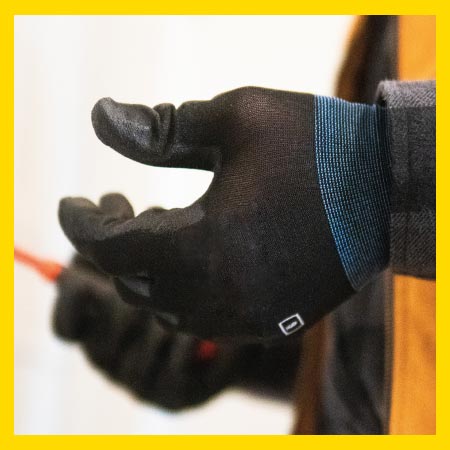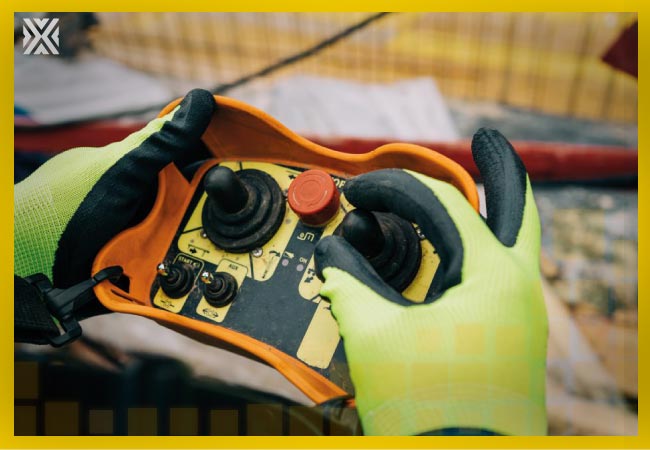Currency
May 18, 2022

Losing a finger, hand, arm, or any part of the body, not only causes physical pain to the worker, it also severely impacts the worker’s livelihood and mental well-being. There is great importance in protecting our fingers, hands, and arms while at work, and building a culture of prevention in the workplace so that everyone can work in a safe environment. Hand, arm and finger injuries are preventable. Reducing the risk at its source is fundamental.
Forty-six workers lost their hands or fingers in amputation accidents in Singapore last year, mainly due to the unsafe use of machinery. Such injuries, which often have a lasting impact on the workers’ lives and livelihoods, are preventable, stressed Senior Minister of State for Manpower Zaqy Mohamad when he launched the 2021 Safe Hands Campaign. “We need to persevere in our efforts to ensure such incidents do not recur,” he said, as he encouraged companies to embrace a culture of reporting near misses1. The significant trend in hand and arm injuries are correlative to the use of machinery, which pose an immediate call for action by all stakeholders.
“the significant trend in hand and arm injuries are correlative to the use of machinery”
We should start looking at hand and arm protection from the inception of each and every planning paradigm. When planning is being carried out by the HSE manager and line manager, the considerations with regards to hand and arm protection are listed below by stages:
•The 5W+1H
•General duties of person at the workplace
•Contractor’s Scope of Work
•Non-powered hand tools
•Machines
•Hand and arm risk management, and management of change
•Types of hazards pertaining to hand, arm, finger
•Training for persons who could be exposed to hand, arm and finger risks
•Hand protection equipment
When we are in the planning paradigm, we should consider adopting the 5W+1H to assist us in understanding the overview of the entire process on how to prevent hand, arm and finger injuries. These are some questions which I always ask during a planning meeting:
•Who are the persons exposed to hand, arm and finger risks?
•What hazards can be identified from the job scope, method and machines that the workers are exposed to?
•Where is the PPE matrix in accordance with the Scope of Work (SoW) and hazards?
•When are we conducting training for the workers/operators?
•Who is monitoring the effectiveness of these risk control measures?
•How can we achieve zero harm on hand, arm and finger injuries?

The employers, principals and self-employed persons in all workplaces exercise their due diligence as a duty of care to:
•Conduct risk assessments (RA) to identify and control WSH risks
•Provide safe work facilities and arrangements for workers
•Ensure safety in machines, equipment, substances used, and work activities carried out
•Provide adequate instruction, information, training and supervision to workers
•Implement risk control measures for dealing with emergencies
During the pre-tender stage, the contractor will have a clear breakdown on the inventories of the Scope of Work. This Scope of Work shall be utilised to understand the specific method of work in order to plan for a Hand Arm Safety Programme. The Scope of Work can do wonders if utilised to its optimal potential, such as when looking at manpower, machines, method, material, measurement and environment (5M+1E). These are essential pieces of information needed in order to conduct a comprehensive and contextualised risk assessment.
The ergonomic design of powered and non-powered hand tools is important to avoid awkward postures of the hand and arm, and prevent the user from experiencing excessive exertion and/or vibration. Non-powered hand tools include pliers, screwdrivers, hammers and knives.
Powered hand tools such as chainsaws and powered screwdrivers can be electric or pneumatic. The use of poorly designed hand tools, such as hand tools with small grip areas, can lead to poor hand-wrist posture and place excessive pressure on the hand.
The following are good practices for the selection and use of hand tools appropriate for the job:
•Select or design tools that can be operated with the wrist in a neutral position
•Avoid short tool handles that press into the palm of the hand
•Avoid narrow tool handles that press deeply into the hand when the tool is used
•Select or design tools that can be used with either the right or left hand
•Select or design tools that require less effort or rotational movement to use, improve posture and reduce holding time
•Select tools with handles made of slip-resistant materials
•Counterbalance or support heavy tools, e.g. by hanging heavy tools from a support
•Ensure that the hand and fingers are able to easily grasp the tool
https://www.hsmemagazine.com/article/safety-in-hand/
Forty-six workers lost their hands or fingers in amputation accidents in Singapore last year, mainly due to the unsafe use of machinery. Such injuries, which often have a lasting impact on the workers’ lives and livelihoods, are preventable, stressed Senior Minister of State for Manpower Zaqy Mohamad when he launched the 2021 Safe Hands Campaign. “We need to persevere in our efforts to ensure such incidents do not recur,” he said, as he encouraged companies to embrace a culture of reporting near misses1. The significant trend in hand and arm injuries are correlative to the use of machinery, which pose an immediate call for action by all stakeholders.
“the significant trend in hand and arm injuries are correlative to the use of machinery”
Where Should We Start?
We should start looking at hand and arm protection from the inception of each and every planning paradigm. When planning is being carried out by the HSE manager and line manager, the considerations with regards to hand and arm protection are listed below by stages:
•The 5W+1H
•General duties of person at the workplace
•Contractor’s Scope of Work
•Non-powered hand tools
•Machines
•Hand and arm risk management, and management of change
•Types of hazards pertaining to hand, arm, finger
•Training for persons who could be exposed to hand, arm and finger risks
•Hand protection equipment
The 5W+1H
When we are in the planning paradigm, we should consider adopting the 5W+1H to assist us in understanding the overview of the entire process on how to prevent hand, arm and finger injuries. These are some questions which I always ask during a planning meeting:
•Who are the persons exposed to hand, arm and finger risks?
•What hazards can be identified from the job scope, method and machines that the workers are exposed to?
•Where is the PPE matrix in accordance with the Scope of Work (SoW) and hazards?
•When are we conducting training for the workers/operators?
•Who is monitoring the effectiveness of these risk control measures?
•How can we achieve zero harm on hand, arm and finger injuries?

Duty of Care
The employers, principals and self-employed persons in all workplaces exercise their due diligence as a duty of care to:
•Conduct risk assessments (RA) to identify and control WSH risks
•Provide safe work facilities and arrangements for workers
•Ensure safety in machines, equipment, substances used, and work activities carried out
•Provide adequate instruction, information, training and supervision to workers
•Implement risk control measures for dealing with emergencies
Contractor’s Scope of Work
During the pre-tender stage, the contractor will have a clear breakdown on the inventories of the Scope of Work. This Scope of Work shall be utilised to understand the specific method of work in order to plan for a Hand Arm Safety Programme. The Scope of Work can do wonders if utilised to its optimal potential, such as when looking at manpower, machines, method, material, measurement and environment (5M+1E). These are essential pieces of information needed in order to conduct a comprehensive and contextualised risk assessment.
Powered and Non-Powered Hand Tools
The ergonomic design of powered and non-powered hand tools is important to avoid awkward postures of the hand and arm, and prevent the user from experiencing excessive exertion and/or vibration. Non-powered hand tools include pliers, screwdrivers, hammers and knives.
Powered hand tools such as chainsaws and powered screwdrivers can be electric or pneumatic. The use of poorly designed hand tools, such as hand tools with small grip areas, can lead to poor hand-wrist posture and place excessive pressure on the hand.
The following are good practices for the selection and use of hand tools appropriate for the job:
•Select or design tools that can be operated with the wrist in a neutral position
•Avoid short tool handles that press into the palm of the hand
•Avoid narrow tool handles that press deeply into the hand when the tool is used
•Select or design tools that can be used with either the right or left hand
•Select or design tools that require less effort or rotational movement to use, improve posture and reduce holding time
•Select tools with handles made of slip-resistant materials
•Counterbalance or support heavy tools, e.g. by hanging heavy tools from a support
•Ensure that the hand and fingers are able to easily grasp the tool
SOURCE:
https://www.hsmemagazine.com/article/safety-in-hand/









